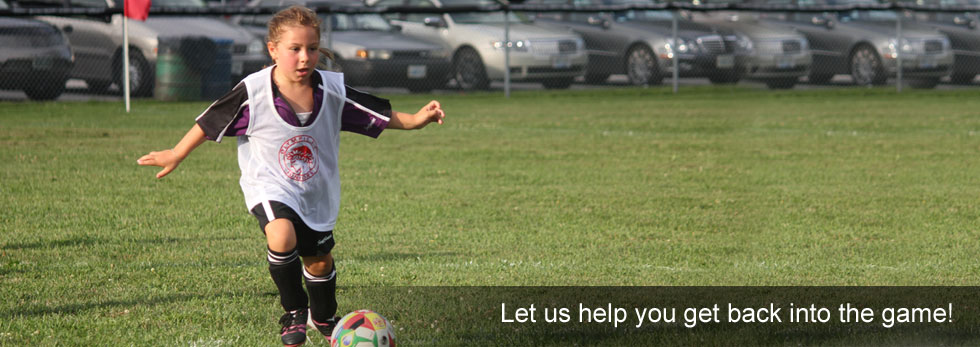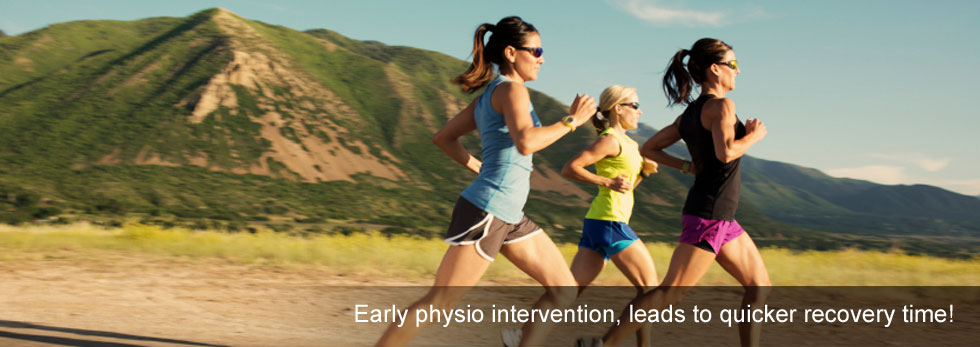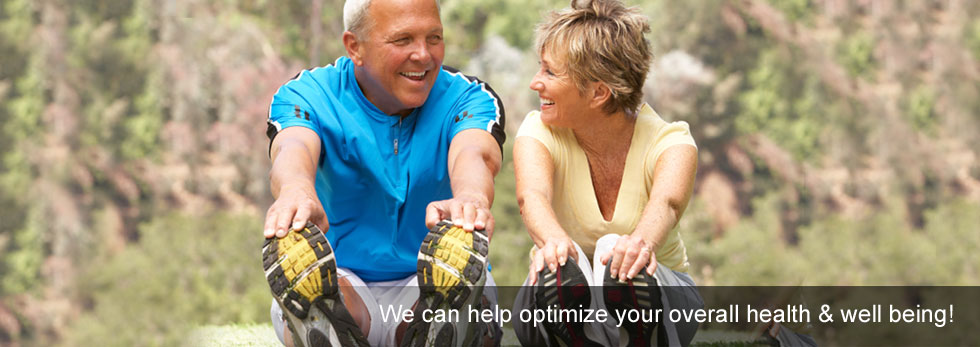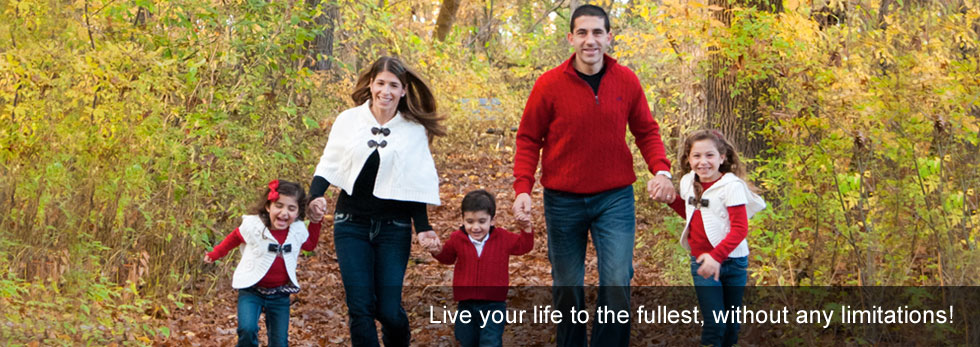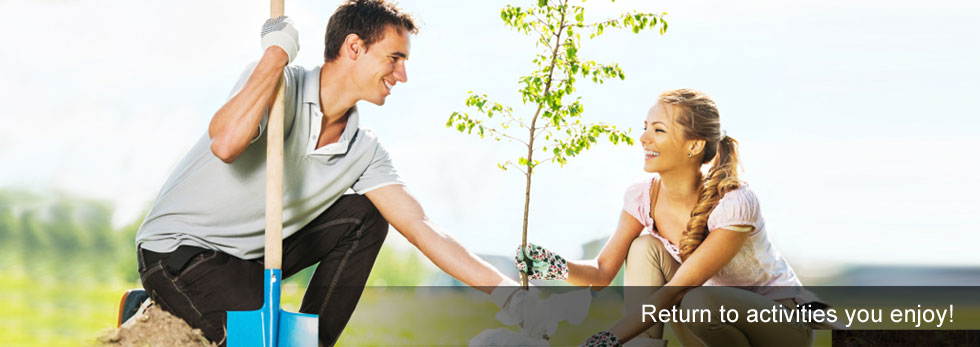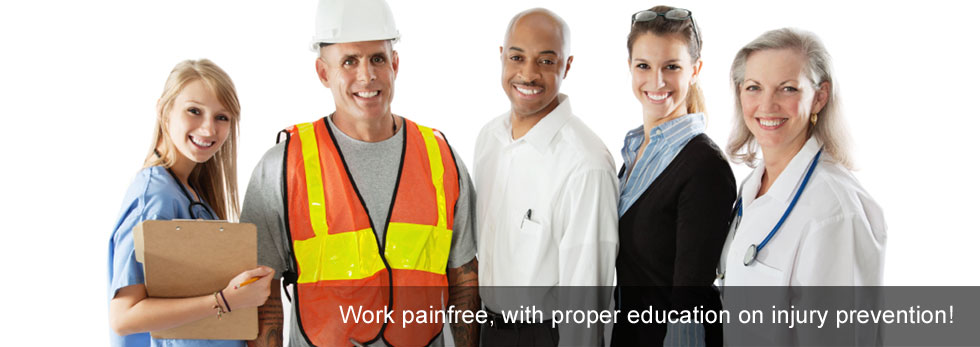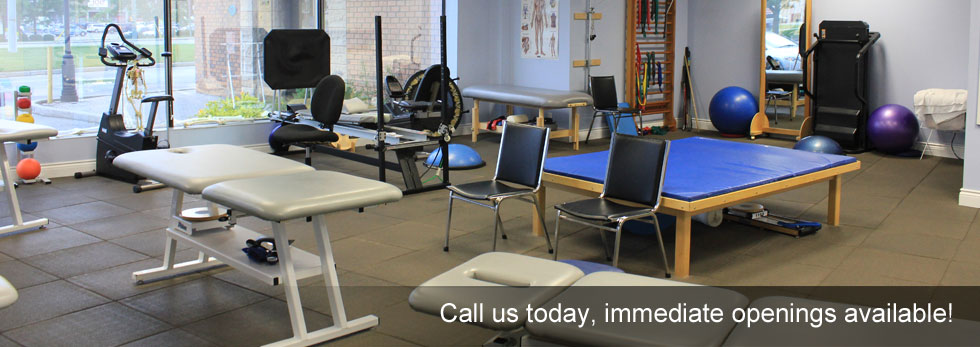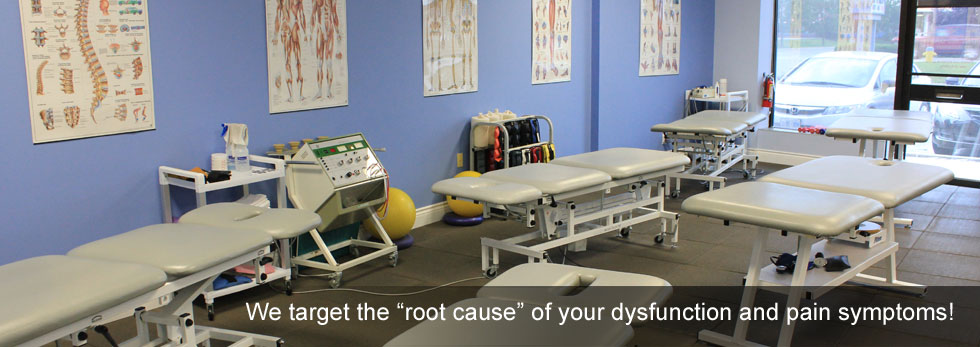MANUAL THERAPY
Manual therapy is a specialized technique used by Sport and Spine Physiotherapist's to assess and treat movement dysfunction in the body. It includes a detailed biomechanical assessment of the muscles, joints, fascia and nerves as well as manually applied movement techniques such as joint mobilization/manipulation, myofascial release, soft tissue mobilization and neural mobilization to treat excessive or restricted movement. Jim has taken several post-graduate courses in orthopeadic manual therapy and routinely uses this technique with all patient conditions.
EXERCISE PRESCRIPTION
Exercise prescription commonly refers to the specific plan of fitness-related activities that are designed for to improve muscle activation / strength and improve overall mobility. Due to the specific and unique needs and interests of the client/patient, everybody exercises prescription will be different and very individualized. Factors such as age, motivation, general health and activity level are important in determining which exercises are prescribed.
Home exercise programs generally include directions for exercises that the patient should continue to perform independently at home. Although some people find home exercises to be a nuisance, completing a home exercise program is an integral part of achieving success in physical therapy.
PRE AND POST-OPERATIVE REHABILITATION
Pre-op treatment is used to maximize readiness for surgery by improving patient education, expectations, improving joint mobility, strength and regaining proper body mechanics which may have lead to the need for surgery. Research indicates that a joint that is functioning properly (mechanics, flexibility, strength, motor control,…) pre-surgery will respond better and faster after surgery.
Post-operative recovery following orthopaedic surgery will focus on the limitations resulting from the surgery. Initially, pain management, swelling reduction, joint mobility, muscle activation and promoting tissue healing will be addressed. This will be progressed to gradually increased strengthening, advanced movement patterns, balance, and overall joint junction. Lastly, advanced treatment will focus on regaining full stability of the joint and ensuring a safe return to the patient's desired activity.
SHIFT CONCUSSION MANAGEMENT PROGRAM
A concussion is a “complex pathophysiological process affecting the brain, induced by traumatic biomechanical forces, either direct or indirect to the head. Current evidence suggests that the rapid stretch of nerve fibers within the brain suffered during a concussion, can lead to physical, cognitive, behavioral and emotional signs and symptoms. At Sport And Spine Physiotherapy, our Level II physiotherapy provider will assess each case individually and initiate the most appropriate treatment that is necessary. Follow up treatment and a steady progress of daily activities, work and play will ensure a full recovery. Baseline testing is also available to provide outcome measures for monitoring progression.
POSTURE AND MOTOR CONTROL RETRAINING
Motor control, or the timing and control of your movement, is very important for the body to function optimally. It is dependent on several factors including the amount of control needed in different situations. Are you lying in bed, sitting supported in a chair, standing on two legs or one? Are you balancing on skates, a bike or on the rock face of a mountain? The amount of support your body has will change the amount of control your body needs to exert to maintain its position.
How well your body is able to adapt to these different scenarios depends on many factors: your muscle strength, balance, proprioception as well as how you feel emotionally in these situations. Our life experiences and the way our bodies develop also contribute to our motor control. If you've been doing an activity all your life, you'll look very different from someone who's trying it for the first time. Injuries are also a factor. A ballerina who sprains her ankle will have a difficult time balancing on point. A person who is in a car accident and has a neck whiplash injury may have a hard time supporting the weight of their head upright all day long.
Poor motor control can also be the cause of injuries. A person whose knees fall in when squatting may, over time, develop pain in the knees, hips or feet. Their pattern of movement is not optimal for maintaining healthy joints and balanced muscles, so over time, these tissues wear down.
At Sport and Spine Physiotherapy we do a thorough assessment to determine what patterns of movement might be contributing to your injury, pain or less than optimal performance. We then teach you how to correct these patterns so you can optimize your function and performance and decrease your pain.
CORE TRAINING
At Sport and Spine Physiotherapy, when we talk about the core we are referring to the deep muscles in your trunk that can control shearing and movement of the spinal vertebrae and pelvis joints. Formed like a canister, these muscles consist of the diaphragm (roof of the canister); the muscles of your pelvic floor (floor of the canister); the transversus abdominis (front and sides of the canister); and the deep multifidus muscles (back of the canister) (see the figure). These muscles function together to help your pelvis and trunk maintain a stable position.
When they are functioning optimally they will turn on before your arms or legs move in order to hold your bones in a stable position, provide a base for the other muscles to work from, and allow movement to occur with control without creating shear, torsion or stress between the vertebrae or pelvic joints. When there is pain or injury, the firing timing of these muscles is altered so they do not turn on at the right time or in the right sequence. The result is a loss of control of movement and less than optimal movement strategies. Over time, this will lead to tissue breakdown and eventually pain symptoms. Once you have learned how to turn these muscles on properly, "activate them," we challenge them more so you are able to use them in progressively more difficult and more functional activities. Our goal is to make them function automatically again so you can do all the things you love without pain and in ways that prevent other structures from becoming a problem.
SPORTS PERFORMANCE
As athletes, we all crave that 'sweet spot' - the place where everything feels effortless and painless. It's what makes us love sport and what the therapists at Sport and Spine Physiotherapy want to help you regain with our Sports Performance sessions.
Many factors can make it difficult for you to find your 'sweet spot'. Poor technique, misalignment and muscle imbalance are often at the root of injuries. Because so many of our sports are repetitive in nature, small errors in technique, alignment or muscle balance can compound to create nagging problems. Athletes often develop unconscious compensatory strategies to allow them to continue their sport despite unresolved minor injuries. These compensatory strategies may be creating pain, compromising efficiency or limiting power or endurance. Overcoming these issues and rediscovering your 'sweet spot' is often a matter of restoring optimal posture and movement patterns. Unfortunately, most athletes can't be bothered with these injuries and believe they will just go away on their own.
At Sport and Spine Physiotherapy, our Sports Performance sessions are focused on helping you achieve optimal sport performance. We combine our numerous physiotherapy assessment and treatment tools to address the many facets that may be impacting your athletic performance.
MOTOR VEHICLE ACCIDENT (MVA)
Whiplash injuries and Low Back Pain as well as other joint injuries are common result of a motor vehicle accident and can cause pain symptoms and difficulty completing daily tasks. The pain can be very debilitating and can impact every area of your life. Rehabilitation is vital. The therapists at Sport and Spine will work with you to help stabilize, mobilize and strengthen tissues damaged in an accident, readying you for return to work and play.
WORK RELATED INJURIES (WSIB)
Work-related injuries are injuries that occur on the job. They stem from a single incident or usually are a direct result of the repetitive motions assigned to the specific job position. Work-related injuries can lead to decreased daily function, mobility and lead to intolerable pain symptoms. Treatment at Sport And Spine Physiotherapy will initially focus on reducing the inflammation and pain symptoms, improving tissue healing and regaining full mobility, strength and function. Ultimately, with proper education, the goal will be to improve posture and body mechanics to avoid pain reoccurrence and allow a safe return to work.
MODALITIES:
Modalities are defined as ways of applying heat, cold, electricity, or another physical agent to the body to induce a desired effect. Those effects could be increased circulation, decreased pain, inflammation and swelling and promote tissue healing.
Moist hot packs are commonly used for the application of superficial heat to the body. Superficial heating can help increase local circulation, muscle relaxation, increased extensibility (stretchiness) and improved localized circulation.
Ultrasound waves simply vibrate the tissue cells like those of the muscles, tendons or ligaments. This vibration helps improve circulation, decreases pain and promotes tissue healing.
Cold treatments (cryotherapy) can range from ice or gel packs to ice massage. The two primary goals of cryotherapy are to reduce pain and decrease circulation. Pain reduction occurs from the slowing of nerve fibers carrying the message of pain to the brain. Decreased circulation helps decrease swelling by keeping fluid from building up as the inflammatory process progresses.
For pain reduction, there are several forms of electrical stimulation. Electricity is applied, either by Tens or Interferential Current, to the surface of the skin through adhesive electrodes. The electrical current stimulates certain receptors in the skin that can override the sensation of pain from the site of injury. This works in much the same way as rubbing an injured area decreases the feeling of pain after a sudden impact.
Electrical stimulation used for muscle reeducation is designed to improve muscle activation and regain strength and motor control after a surgery or muscle damage.
As with any treatment, you must consider the best choice. Many of these treatments are for pain reduction and tissue healing. It is rare that the modalities listed above are the only treatments used by your physiotherapist. Addressing the causes of the pain (usually related to how the body moves) is the most important aspect of rehabilitation and treatment.
PERI- & POST-PARTUM HEALTH
Those who have had a child undergo some amazing changes in their body during pregnancy. From a physical perspective:
- The ligaments holding bones together become looser so the bones can shift to accommodate the growing fetus.
- Abdominal muscles stretch and can sometimes separate at the abdomen midline. This is called a diastasis recti.
- Stomach growth changes the centre of mass and alters posture.
- Pressure of the growing fetus pushes up on the rib cage and can change breathing and the function of your diaphragm.
- Low back pain can inhibit the proper functioning of deep abdominal muscles, deep back muscles, and pelvic floor muscles.
Delivering the baby causes another stress on the body:
- Vaginal delivery stretches the pelvic floor muscles and supporting fascia, and can also affect the nerves supplying the pelvic floor.
- There can be tearing of the pelvic floor muscles and fascia which may require an episiotomy. This can cause scar tissue.
- The pubic symphysis can separate.
- C-sections create trauma to the abdominal wall and scarring.
All in all, the body can feel very different than it did before childbirth. Overstretched abdominal and pelvic floor muscles don't provide the support they once did. Hormonal changes, breast feeding and changes in activity all contribute to changes in the structure of your tissues. Your muscles, ligaments, skin and joints may all be more mobile and provide less support so you feel like you move with less control and stability. And on top of that, carrying and feeding your child can put you in some awkward positions, ones that may not hold you in the best posture.
The body is great at finding ways to adapt when things are not working properly, but these adaptations are not always the best way for the body to function. While it's difficult to find time with a new child in your life, it's important to take care of your body after pregnancy to improve your short term function and prevent future damage that can occur because of the compensation strategies you may be using. These adverse strategies may lead to:
- Incontinence
- Uterine or bladder prolapse
- Hip osteoarthritis
- Degenerative disc disease of the lumbar spine
- Neck and back pain
At Sport and Spine Physiotherapy the therapists have skills and knowledge to help you deal with problems that may arise during your pregnancy and to get you and your body functioning optimally again after pregnancy and delivery:
- Advanced training in Manual Therapy to help you restore normal joint mechanics and posture.
- Motor Control and Pelvic Floor Muscle Retraining to help you learn how to move optimally.
FitforeGolf™
We're the only affiliated FITforeGOLF™ clinic in Sarnia offering a specialized golf program to improve your game, provide treatment and prevent golf related injuries. This program uses the latest golf research to assess your posture, strength, and body mechanics as it relates to golf, as well as your swing mechanics. This will help establish an individualized golf specific exercise program. We offer proactive treatment sessions focusing on helping you improve your golf swing and ultimately, your golf score! Better Golf Through Better Health!
LYMPHEDEMA TREATMENT
At our clinic, we offer the Lympha Press Pump, which delivers comfortable, high pressured treatment to help minimize the extremity swelling and improve joint mobility and overall function. Each patient is educated on safety issues, edema reducing massage techniques, lymphedema exercises and wrapping application.
Benefits of treatment
- Decrease limb girth, soften tissue and improve skin quality
- Prevent open wounds, and decrease risk of infection and hospitalization
- Improve range of motion, exercise capacity and appearance
- Improve quality of life, reduce risk of immobility and social isolation
- Enable independence of daily living activities and long term self-management





